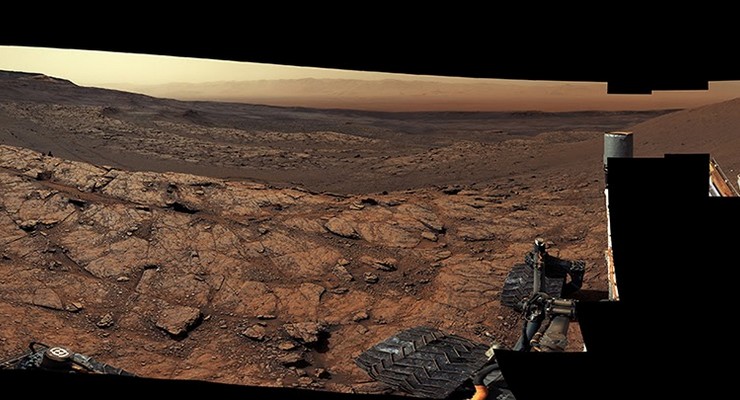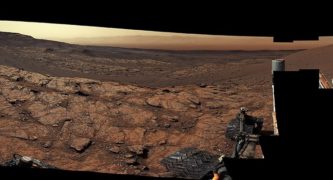
It’s been 3,000 Martian days, or sols, since Curiosity touched down on Mars on Aug. 6, 2012, and the rover keeps making new discoveries during its gradual climb up Mt. Sharp, the 3-mile-tall (5-kilometer-tall) mountain it has been exploring since 2014.
Geologists were intrigued to see a series of rock “benches” in the most recent panorama from the mission.
Stitched together from 122 images taken on Nov. 18, 2020, the mission’s 2,946th sol, the panorama was captured by the Mast Camera, or Mastcam, which serves as the rover’s main “eyes.” Toward the center of the panorama is the floor of Gale Crater, the 96-mile-wide (154 kilometer-wide) bowl that Mt. Sharp sits within. On the horizon is the north crater rim. To the right is the upper part of Mount Sharp, which has rock layers that were shaped by lakes and streams billions of years ago.
The curved rock terraces that define the area can form when there are harder and softer layers of rock on a slope. As the softer layers erode, the harder layers form small cliffs, leaving behind the benchlike formations. They can also form during a landslide, when huge, curved slabs of bedrock slide downhill. Curiosity’s team has seen benches before in Gale Crater, but rarely forming such a scenic grouping of steps.
“Our science team is excited to figure out how they formed and what they mean for the ancient environment within Gale,” said Curiosity’s project scientist, Ashwin Vasavada of NASA’s Jet Propulsion Laboratory in Pasadena, which built and manages the rover.
But don’t expect a rover this busy to stay put: Soon after capturing the new panorama, it was off for higher ground. This year, the rover has been driving across a clay-bearing region called “Glen Torridon.” After making a pit stop at a location nicknamed “Mary Anning,” it’s continued toward the next major layer, called “the sulfate-bearing unit.”














 0 comments
0 comments


